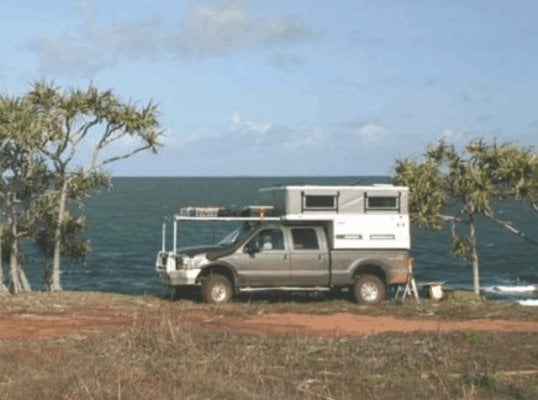Simpleman (shanz3n5)
Advanced Member
Looking for all good ideas and tech issues, to build up a front cab to front bumper rack and cargo carrier.
I know this isnt a typical set up or solution. I will mostly be using it for long haul and long base camp stays. Here is one photo of the general idea i found through google images. Unknown owner.
Im having an Aluminess front bumper made at this time, and will be mounting a 3 receiver front hitch to frame under it.
Running 2 vertical uprights and horizontal supports is the easy part.
How to attach the horizontal supports to the rear is my main concern
Ideas:
1. Low profile headache rack. Concern: truck flex point between bed and front bumper. twisting rack.
2. Yakima Base Rack (cab roof tower set and bar. No capacity specs and very pricey). Is the the capacity (when i find it) in the bar or the tower shoes.
3. Thule rack. Similar issue but the posted a weight capacity of 165. I'm sure to exceed that weight with basket and gear, but they have a bar/tube that maybe i could stiffen.
so im open to ingenuity and ideas or if there is a system already out there
thanx

I know this isnt a typical set up or solution. I will mostly be using it for long haul and long base camp stays. Here is one photo of the general idea i found through google images. Unknown owner.
Im having an Aluminess front bumper made at this time, and will be mounting a 3 receiver front hitch to frame under it.
Running 2 vertical uprights and horizontal supports is the easy part.
How to attach the horizontal supports to the rear is my main concern
Ideas:
1. Low profile headache rack. Concern: truck flex point between bed and front bumper. twisting rack.
2. Yakima Base Rack (cab roof tower set and bar. No capacity specs and very pricey). Is the the capacity (when i find it) in the bar or the tower shoes.
3. Thule rack. Similar issue but the posted a weight capacity of 165. I'm sure to exceed that weight with basket and gear, but they have a bar/tube that maybe i could stiffen.
so im open to ingenuity and ideas or if there is a system already out there
thanx


